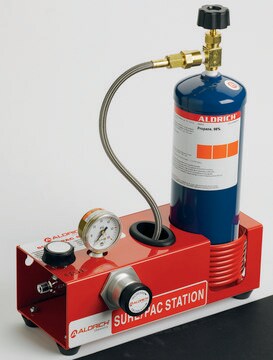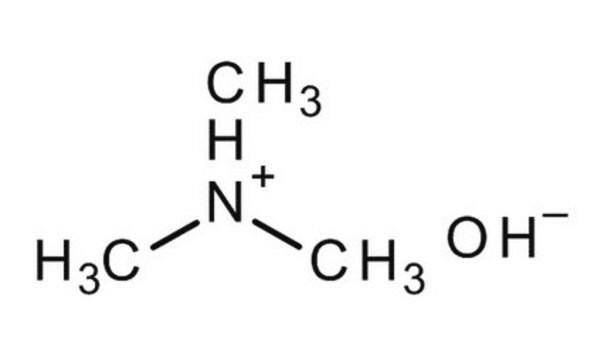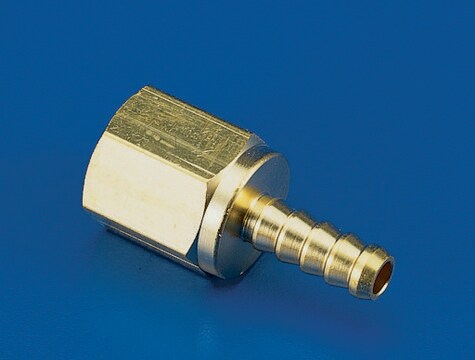702846
Trimethylamine
anhydrous, cylinder, with 316SS needle valve, 99%
About This Item
Produits recommandés
Qualité
anhydrous
Niveau de qualité
Densité de vapeur
2.09 (vs air)
Pression de vapeur
13.3 psi ( 21 °C)
Essai
99%
Forme
cylinder
Température d'inflammation spontanée
374 °F
Limite d'explosivité
11.6 %
pb
3-4 °C (lit.)
Pf
−117 °C (lit.)
Densité
0.63 g/mL at 20 °C (lit.)
Température de stockage
2-8°C
Chaîne SMILES
CN(C)C
InChI
1S/C3H9N/c1-4(2)3/h1-3H3
Clé InChI
GETQZCLCWQTVFV-UHFFFAOYSA-N
Vous recherchez des produits similaires ? Visite Guide de comparaison des produits
Conditionnement
Compatible with the following:
Informations légales
En option
Raccord cannelé
Régulateur
Souvent commandé avec ce produit
Mention d'avertissement
Danger
Mentions de danger
Classification des risques
Acute Tox. 4 Inhalation - Eye Dam. 1 - Flam. Gas 1A - Press. Gas Liquefied gas - Skin Irrit. 2 - STOT SE 3
Organes cibles
Respiratory system
Code de la classe de stockage
2A - Gases
Classe de danger pour l'eau (WGK)
WGK 1
Point d'éclair (°F)
19.4 °F - closed cup
Point d'éclair (°C)
-7 °C - closed cup
Équipement de protection individuelle
Eyeshields, Faceshields, Gloves, multi-purpose combination respirator cartridge (US)
Faites votre choix parmi les versions les plus récentes :
Déjà en possession de ce produit ?
Retrouvez la documentation relative aux produits que vous avez récemment achetés dans la Bibliothèque de documents.
Notre équipe de scientifiques dispose d'une expérience dans tous les secteurs de la recherche, notamment en sciences de la vie, science des matériaux, synthèse chimique, chromatographie, analyse et dans de nombreux autres domaines..
Contacter notre Service technique










